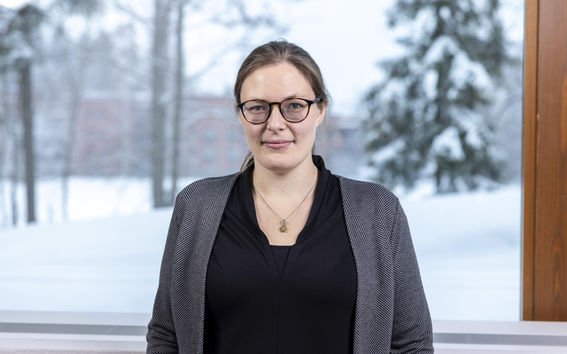Philine Schiewe uses algorithm to get new ideas for public transport planning

What do you research and why?
From a background I’m a mathematician, but I do optimization research that is connected to mathematics, computer science and economics. The application areas are public transport planning and last mile logistics – the final step of the delivery process.
My research is mainly theoretical, but we also have a software project LinTim that moved to Aalto with me. The project was launched 15 years ago in Göttingen by Anita Schöbel and I started working in the project in 2013. In 2017, we made it open source.
In the project, we are collecting both algorithms and data sets related to public transport planning. This software project allows us to consider the planning process as a whole: if we change something in an early planning stage, how does that affect the outcome of later planning stages? For example, we can evaluate the impact of changing a line plan on the travel times of passengers by creating a corresponding timetable automatically. It is quite unique that one software is evaluating multiple planning stages in an integrated manner.
Since the project has been made available as open source, we gained multiple new collaborators and users. In Leipzig, a public transport company is testing the project and using algorithms to get new ideas for line planning. Usually, the lines that are operated by busses or trains are chosen from a predefined set, the so-called line pool. This pool is often created manually by planner. We introduced a new algorithm to generate these line pools automatically. Thus, we can get lines that differ from the ones planners would create manually and generate a larger solution space. Depending on the objective of the planner, this can either reduce the cost of the system or is beneficial for the customer by reducing the travel time or the number of transfers.
As LinTim is a research project, the algorithms contain some abstractions. To apply them to specific cities, they might need to be adapted slightly. This is currently tested in collaboration with researchers in Stuttgart and Winterthur.
The example of public transport shows that solving sequential problems in an integrated manner improves the solution quality but at the same time makes the problem more complicated to solve. As sequential problems are not limited to transportation and logistics applications, I am also considering the integration of sequential processes in a more general and abstract way. Here, it is important to understand when it is beneficial to look at the problem in an integrated manner.
How did you become a professor or a researcher?
I really liked the topic of my PhD; therefore, it was easy to stay with it. And when I found the call for this professorship, I really liked the idea of a department with both areas of research, mathematics, and operations research.
There are national operations research societies both in Finland and Germany. I got the opportunity to work as an assistant to the board in Germany for two years. There I was able to see more computer science and business-related operations research. It is a very large society in Germany and very nice networking opportunity. I am looking forward to getting to know the Finnish OR society as well and gain new perspectives this way.
What is the most important high point of your career?
I enjoy being at conferences. Recently I’ve presented my research for instance at the ALGO conference, the major European event for researchers, students, and practitioners in algorithms.
What is the most essential characteristic of a researcher?
I think being a researcher means being perseverant – even a bit stubborn – to look at problems and find solutions. One must also be able to collaborate with others especially from different fields to get new ideas and to get different viewpoints to the problems.
What do you expect from the future?
I’m very much looking forward to my own research group. There is an open call for PhD students at the Department of Mathematics and Systems analysis. I also wish to build connections to the system analysis lab and applied mathematics.
Further information:
LinTim, Integrated Optimization in Public Transportation
Contact information:
- Published:
- Updated:
Read more news

DeployAI Partners Gather for Heart Beat Meeting in Helsinki
The European DeployAI project's partners gathered for the Heart Beat meeting hosted by Aalto University Executive Education in Helsinki.
Get to know us: Associate Professor Maria Sammalkorpi
Sammalkorpi received her doctorate from Helsinki University of Technology 2004. After her defence, she has worked as a researcher at the Universities of Princeton, Yale and Aalto.
Aalto computer scientists in ICML 2024
Computer scientists in ICML 2024